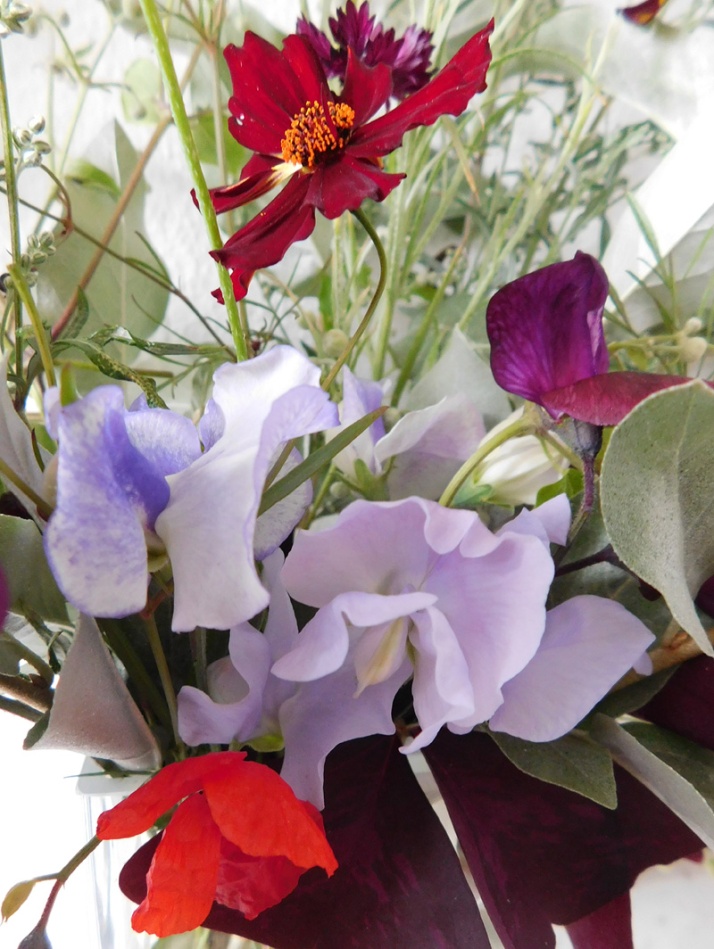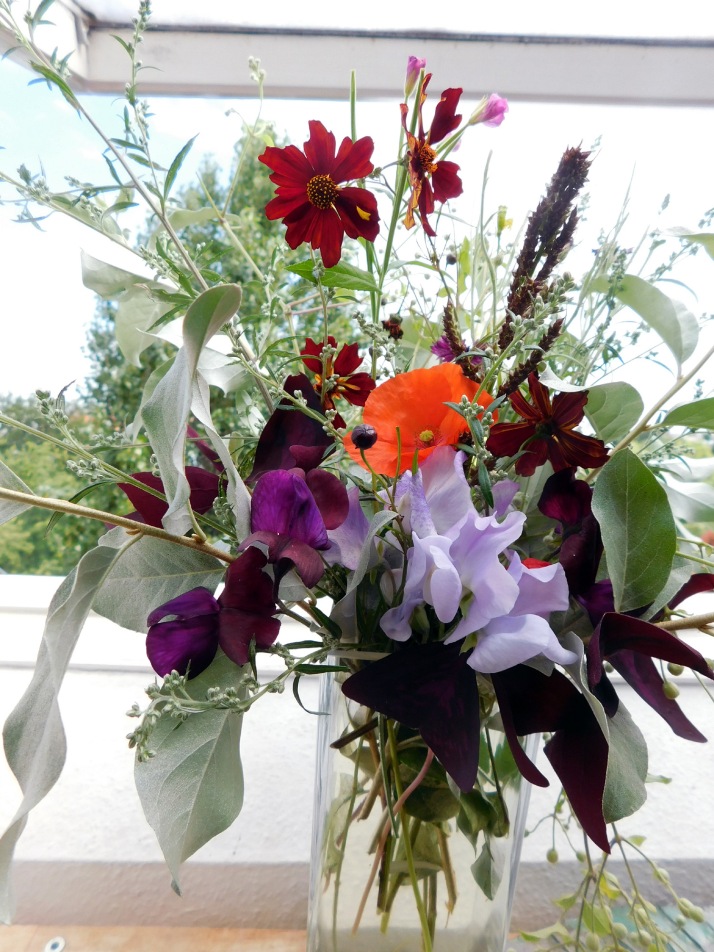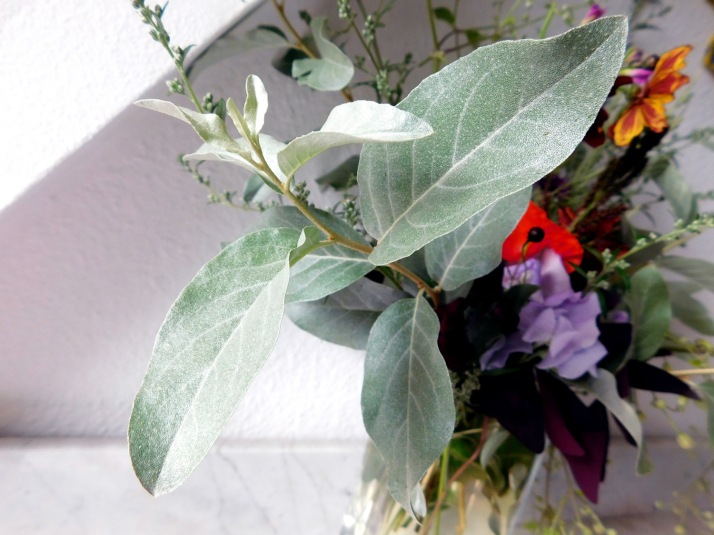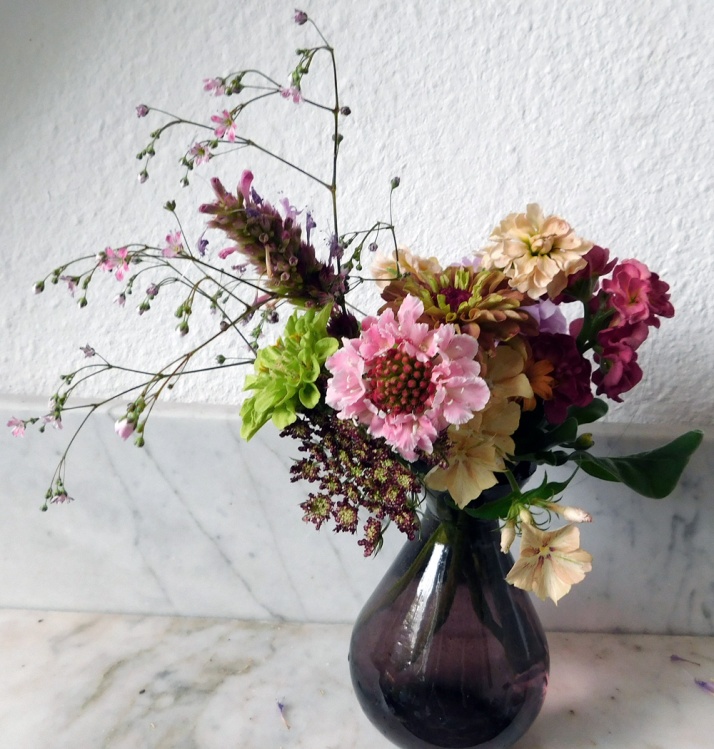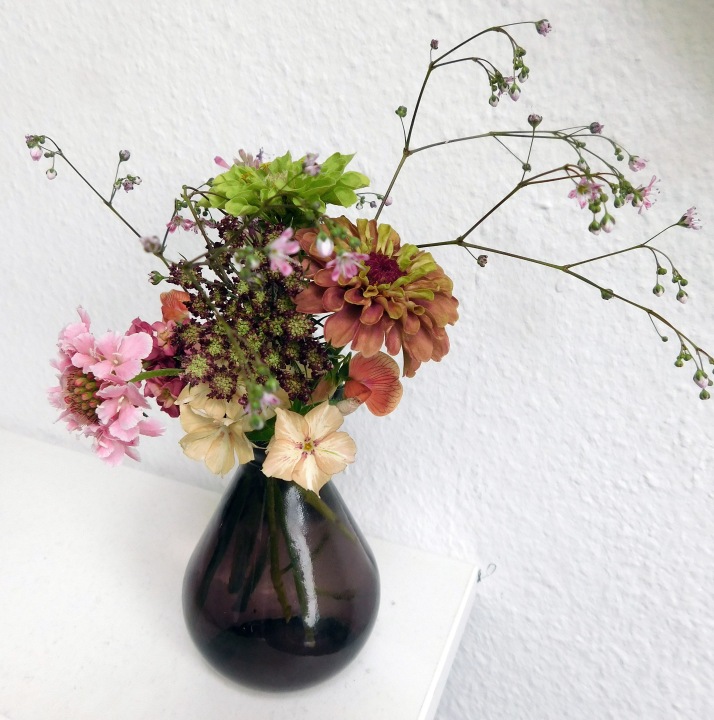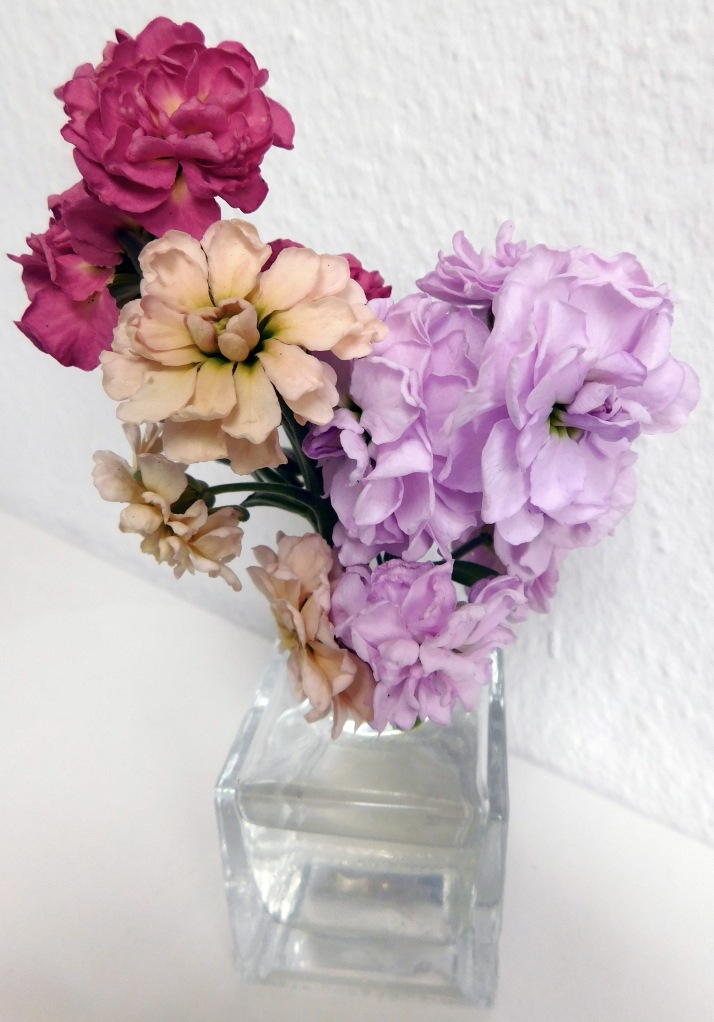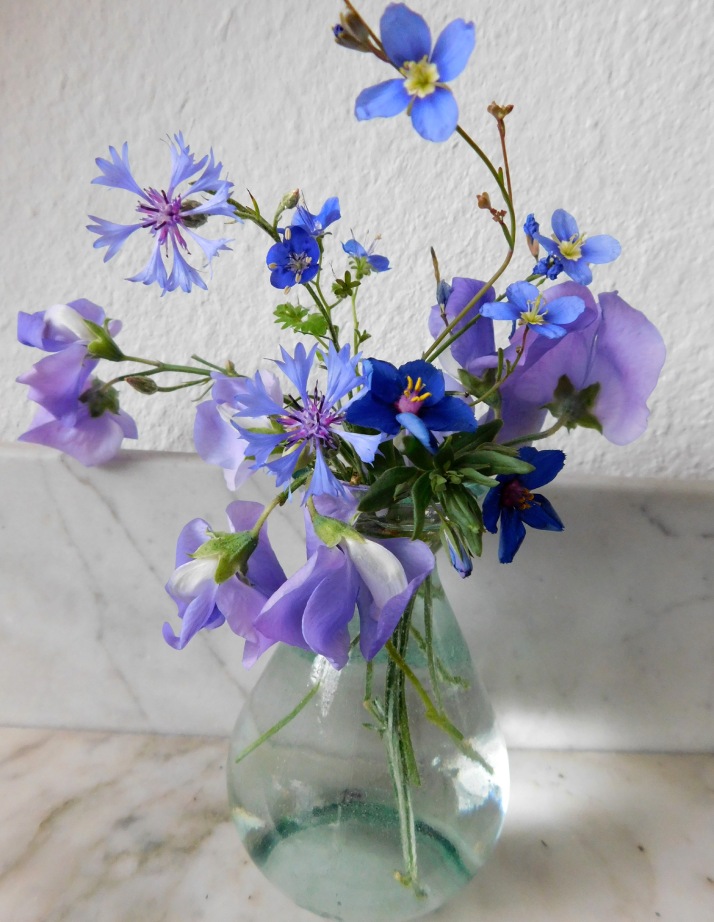
Herb boxes in front of our kitchen windows
Herbs are a staple of every cottage garden and since I love to cook, I grow loads of them. First and foremost Savory, my favourite of all. The German name is “Bohnenkraut”, Bean Herb (Bonenkruid in Dutch), and it is commonly used to spice various legumes. According to Gernot Katzer’s fabulous spice pages, Winter Savory might be part of the oriental spice mixture Zahtar. A childhood favourite of mine was “Dicke Bohnen mit Speck”, broad (fava) beans with bacon and Summer Savory. Ever since I became vegetarian in my late teens I created all kinds of alternative (and, arguably, more yummy versions) with fried spicy tempeh or smoked tofu. Some people use Savory to improve their diets, too – mixed with garlick flakes it supposedly works as a salt replacement. The annual Summer Savory (Satureja hortensis) has a warm, distinct flavour, which some people compare to thyme. I think it`s unique though, there is nothing even similar. Its origins go back to areas around the Black Sea. Nevertheless, it seems to have not been cultivated in antique times. The earliest records go back to the 9th century. The perennial Winter Savory (Satureja montana) varieties taste stronger and more “resinous”, like many mediterranean herbs. I used to grow a pink-flowered variety (Satureja montana var. illyrica) which died last winter. My latest addition is Satureja montana var. citiriodora, which has a strong lemony flavour. All Savorys produce strongly aromatic blossoms which are also popular with pollinators.

Satureja montana var. citriodora
I always let some Summer Savorys bloom for them. Besides, I need them to self-seed, which they usually do abundantly. I have plenty of plants in front of my kitchen windows and some more in my balcony herb garden.
My actual kitchen garden currently features several Basils, Chervil, two Thymes (Thymus x citriodorus “Golden Dwarf” and x fragrantissimus “Orange”), greek Oregano, Cilantro (Coriandrum sativum) “Slobolt” or “Slo-bolt”, Borage and two Nasturtiums – “Black Velvet” and “Salmon” – which I grow for their blossoms. I think their leaves taste just nasty.

Herbs in front of my kitchen

Cilantro “Slobolt” (right) is slowly filling up it’s container.
My “main herb garden” is on the balcony and consits of two bigger containers plus herbs paired with other plants.

The main herb garden on the balcony
In the blue box grow (from back to front): two Marjorams with several Summer Savorys, two Feverfews (Tanacetum parthenium) and a tiny Agastache “Apricot Sprite”. In the big chartreuse box: French Tarragon, Dill “Mariska”, an old yellow Sage (Salvia officinalis aurea icterina), Origanum vulgare “Variegatum”, a few more Savorys of course and Amethystea caerulea, a pretty small herb which tastes like the most aromatic mushrooms such as Cèpe (much more so than the supposed “mushroom plant” Rungia klossi) and carries tiny blue flowers. Once established it self-sows. French Tarragon is supposed to be short-lived. Mine is actually the oldest plant on the balcony: I have had it for at least six years. It sprawls throughout the box and seems rather robust – it not only survived some severe winters but also the move from another city. If you grow Tarragon, grow the French variety, not the Russian one. It is sooo much more aromatic.
Another supposedly short-lived perennial: Hummingbird mint, Agastache cana. I grew it from seed last year and it survived the winter. Curiously enough, the blossoms have a different colour now – last year they were pink, this year white. It is very attractive to pollinators and has a pleasant Oregano-like flavour, unlike most of the species which smell and taste like liquorice. A taste which I really do not care for – unless it’s liquid like in Raki or Ouzo, after a rich meal.

Agastache cana in June
Just a few days ago I planted Sweet Woodruff (Galium odoratum) in a shady spot beneath a Monkshood (Aconitum carmichaelii ‘Arendsii’). Woodruff is rather popular in Germany: “Waldmeister” flavours all kinds of sweets, like ice creams and jellos. Besides, it is a main ingredient for the traditional Maibowle (dry white wine + sparkling wine + a few sprigs), and here in Berlin, for “Weiße mit Schuss”: Beer plus a shot of either Waldmeister- or raspberry sirup.

Galium odoratum needs a shady spot
Woodruff has a pleasant “green vanilla” taste, which I really love. It derives from coumarin, which can be toxic if consumed in larger amounts.
Besides all of these I grow Jiaogulan (Gynostemma pentaphyllum) and Banana mint (Mentha arvensis) on the balcony, plus a Laurel tree, False Shamrock (Oxalis triangularis ssp. triangularis) and a scented Pelargonium in the kitchen.
I also rent a small allotment in an organic urban gardening project here in Berlin Wedding called Himmelbeet.

Himmelbeet, prepared for the 2nd harvest.
Until yesterday it was covered in Misticanza plus persistent weeds (Galinsoga). I harvested/composted the lot and planted three perennial herbs, Lovage (Levisticum officinale), Meum athamanticum and Monarda “Beauty of Cobham”. And I sowed new Salad greens, the very pretty Rucola “Dragon’s Tongue”, Beet “Bulls Blood” and an Italian heirloom Chicory, “Variegato di Castelfranco”. I have not grown either of these before, so I can’t wait for the first leaves.
